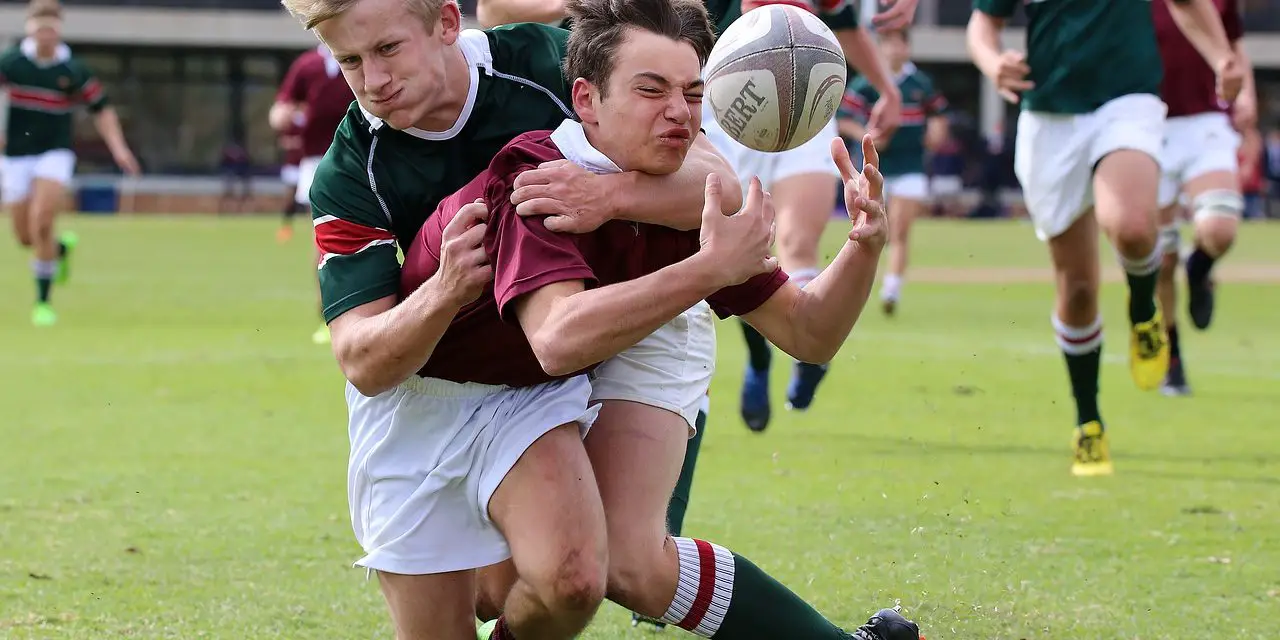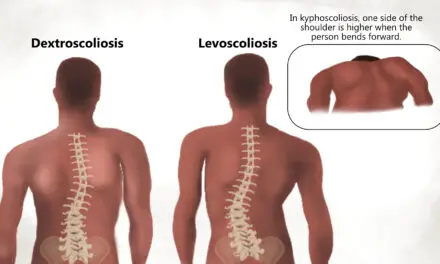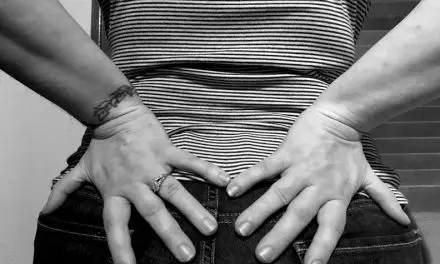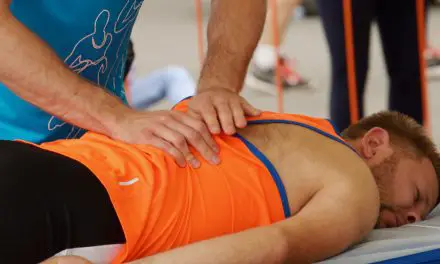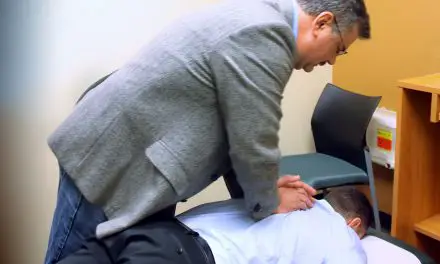An ACL (anterior cruciate ligament) tear is a common knee injury that occurs when that ligament in the knee is stretched too far, partially torn, or completely torn. This ligament helps stabilize the knee joint and is crucial for activities that involve sudden changes in direction or sudden stops, such as American football, parkour, ballet, and tennis.
This article covers current research on the cause of ACL tears and treatment options.
Anatomy and function
The anterior cruciate ligament is a tough band of connective tissues between the thigh bone and tibia. It is made up of collagen, proteins, elastic components, and other substances, working together for various knee functions. It is innervated by posterior articular branches of the tibial nerve and is vascularized by branches of the lateral and medial inferior genicular artery.
Like all ligaments, it has few blood vessels. A fold of synovial tissues, formed by arteries, encircles both the front and back cruciate ligaments, but the ligaments themselves lack blood supply in certain areas. The ACL acts like a stretchy band, preventing the tibia from moving forward too much compared to the thigh bone and resisting twisting forces. It also prevents hyperextension of the knee. But like any piece of elastic, it can only stretch so far.
ACL tear symptoms
Unlike most types of knee pain where there’s a gradual onset or waxing and waning of symptoms, ACL tear symptoms have immediate onset, as it is an abrupt injury. There is usually a “popping” sound that may be loud enough to be heard by anyone near the injured person. The sensation of swelling and that something has torn will follow.
Other symptoms include:
- Sharp knee pain and instability
- Instability or a feeling of the knee “giving way”
- Limited range of motion
- Pain or discomfort when walking or bending the knee
What Causes an ACL Tear?
There are two ways of getting an ACL injury: contact tears and non-contact tears.
Contact ACL Tears
This injury happens when there’s a direct blow or impact to the knee, such as from a collision in sports. The knee may hyperextend or bend inward from the impact, causing the ACL to tear.
Contact ACL tears account for about 30% of ACL injuries.
Non-Contact ACL Tears
This type of ACL injury occurs without any direct contact to the knee, such as during sudden changes in direction, sudden stops, or landing from a jump. It involves the knee bowing inward (valgus) and then twisting, which puts excessive stress on the ACL and causes it to tear.
Non-contact ACL tears account for about 70% of ACL injuries.
About 40% of injuries are attributed to non-contact mechanisms involving pivoting, cutting, or jumping. While sports injuries are the most common, they are not the only cause of ACL tears.
Risk factors of an ACL Tear
About 200,000 people are diagnosed with a torn ACL annually in the U.S. Risk factors of an ACL tear include:
- Gender: Female athletes are two to eight times more likely than male athletes to suffer an ACL injury, and hormones may be a factor.
- The female-male ACL tear ratio has been reported to be as high as 9 to 1. This is likely due to factors like muscle strength, anatomical differences in the pelvis and legs, and hormonal differences.
- One of these hormones—relaxin, a peptide similar to insulin—has been shown to interfere with the structural integrity of most women’s ACL.
- However, one study of more than 20,000 children found that pre-adolescent boys (younger than age 12) are more likely to sustain an ACL injury than same-aged girls.
- Previous injury: People—especially women— who previously had ankle injuries were more predisposed to have injury to the ACL.
- Being young: ACL injuries happen more frequently among children and teenagers peaking at 17 to 18 years for females.
- Return to play too early: Athletes (ages 15–30) who returned to play less than nine months after ACL reconstructive surgery are seven times more likely to sustain a second ACL injury than those who delay return.
- Genetics: A systematic review of 17 studies found that people with a family history of ACL tears are twice as likely to sustain a non-contact ACL tear than those without such family history.
- Although many genes have been shown to be associated with ACL tear, such as COL1A1 and MMP3, 13 of the 14 genetic studies are from the South African or Polish population only. Thus, they are not representative of the world’ general population.
- Anatomical differences: More slope on the back and side of the tibia (called posterior tibial slope) is linked to a higher risk of ACL injuries,
Another study specific to children and adolescents revealed that risk factors for ACL injury include:
- higher body mass index
- subtalar joint overpronation
- lax ligaments
- decreased neuromuscular control of knee motion
Diagnosis
The gold standard for diagnosing an ACL tear is magnetic resonance imaging (MRI), but that’s typically done after a physician thoroughly reviews your health history and performs a physical examination before they approve such a test.
The physical examination would include:
- Inspection and palpation of the knee
- Testing of knee mobility, strength, and stability.
- Examination and testing of the unaffected knee for a baseline comparison. The MRI will confirm whether the tear is complete or partial.
Lachman Test
The Lachman test assesses for ACL tears by evaluating the amount of anterior translation—or forward movement—of the tibia relative to the femur.
The test is performed with the injured person supine. The knee is passively moved to about 20 to 30 degrees flexion, and the leg externally rotated slightly.
The examiner places one hand behind the tibia, and the other on the patient’s thigh with the examiner’s thumb on the tibial tuberosity.
On pulling the tibia anteriorly, an intact ACL should prevent forward translational movement of the tibia on the femur (“firm end-feel”).
Other tests include:
A 2015 systematic review concluded that due to decreased sensitivity of Lachman and pivot shift tests for partial rupture cases, and for awake patients, that there are suspicions regarding the accuracy of all tests.This is probably the reason the MRI is considered the gold standard for confirming the diagnosis.
A 2022 systematic review found that the Lachman, anterior drawer, pivot shift, and lever sign tests are effective for diagnosing ACL injuries. Among them, the lever sign test is best for ruling out ACL injuries, while the pivot shift test is most reliable for confirming them in urgent cases. A likelihood ratio above 10 and below 0.1 are usually strong evidence to confirm or exclude diagnoses.
Torn ACL treatment
Treatment for ACL tears can include surgery and nonsurgical options, such as physical therapy, bracing, and activity modification for partial tears. Surgery options include reconstruction using a graft to replace the torn ligament for complete tears, especially in athletes or those with instability.
ACL surgery or no surgery?
A 2024 systematic review found that “there is no certain evidence” that reconstructive surgery for an isolated ACL tear is better than nonoperative treatment. However, the researchers found that the eight trials included in the study are low quality and high in bias and “must be interpreted with caution.”
Their findings are similar to a 2014 systematic review where the researchers suggested that patients “should receive non-operative interventions before surgical intervention is considered.”
A 2020 study acknowledges that there are controversies when choosing treatment, and states that there are no evidence-based reasons to indicate surgery alone for anyone who tears an ACL. There is also controversy over whether surgery should take place immediately following the injury, or whether there should be physical rehabilitation prior to having surgery.
ACL repair
ACL repair surgery involves grafts, creating tunnels in the bone to anchor the graft, and hardware. Grafts may come from the injured person’s own patellar tendon, hamstring tendon (autograft), or a cadaver tendon (allograft). There is evidence that an increasing number of patients end up having a second surgery to revise the first.
Partial tear surgery
Surgery for a partial ACL tear sometimes differs from a full tear repair in that the uninjured bundle of ligament fibers may be used to attach the graft. But in many cases, the surgeon may use the same technique used for a full tear to avoid causing harm to the intact section.
Research shows that among those who do undergo surgery, the function of the knee is unlikely to return to normal pre-surgery function. Not all athletes are able to return to competitive level sports following ACL repair and are more at risk for subsequent injury. Also, there are also instances where ACL injuries spontaneously heal without intervention.
For those who do not undergo surgery, conservative options include:
- physical therapy
- active exercises
- bracing
- cryotherapy
A Swedish study based on self-reporting from those who had undergone surgery and those who chose non-surgical interventions concluded that patients who chose ACL reconstruction reported superior outcomes for knee symptoms and function, and in knee‐specific and health‐related quality of life, compared to patients who chose non‐surgical treatment.
Research in ACL tears is complicated because most studies can’t be compared well. This is because they involve different populations in terms of age, gender, activity level, associated injuries, how patients were chosen, timing of treatment, and types of treatment. Also, there’s no agreement on how to interpret the clinical and X-ray results.
The treatments mentioned are not a substitute for professional advice or medical care. Always consult a physician or another qualified medical professional for both a diagnosis and prescribed treatment.
How long does it take for an ACL tear to heal?
A systematic review showed that the average time to heal following an ACL surgery is nine to 12 months.
ACL Tear Prevention
People who have had a torn ACL are more at risk for developing long-term osteoarthritis than those who have not, and they’re more likely to sustain a second ACL tear.
Tear prevention is not a guarantee that it will not happen, but it can lower the odds by as much as 50%.
Another review concluded that neuromuscular and proprioceptive training appears to decrease the incidence of ACL tears, but stated that there’s no evidence that certain exercises are better than another.
It seems especially important, as children play competitive sports, to implement training exercises that will strengthen the legs and knee on the whole at an early age, which will hopefully be a habit kept throughout their competitive years.
Massage for ACL tears
While there is no strong peer-reviewed research of massage therapy for ACL tears, there are some basic standards massage therapists should follow as they would with most kinds of knee pain and injuries.
- Health and injury intake: Massage therapists should get as much information as possible during the intake process, such as how recent the injury is, what they were doing when it happened, and what other treatment they are receiving, such as physical therapy, bracing, or self-directed exercises at home.
- Assessment is the observation and evaluation of the quality or ability of something, such as whether the client can walk or perform other motions without pain, how the client self-reports their pain level, and how it’s interfering in the daily functions of their life. Therapists may use active or passive movements to see if the client has full or restricted range of motion.
An assessment can help massage therapists make an informed decision about whether or not to proceed with the massage, and what techniques to use.
Massage best practices for ACL tear
If you have been practicing massage for any length of time, you have probably experienced someone saying “I just hurt my so-and-so, can you get me in right now?” Those are usually the people you should decline to schedule until they have seen a physician.
Work gently, warming the area before going any deeper. While the work may be focused on the knee, remember that instability or pain in the knee may be causing them to walk differently than normal, such as limping or favoring the injured side. This could result in pain elsewhere in the body.
Sometimes people are stressed out by being injured, and that may be especially true of a college athlete who may be worried about their football scholarship or a competitive athlete who is sidelined. There’s nothing wrong with giving a relaxation massage to go along with the knee work.
As with any traumatic injury, you shouldn’t be applying deep tissue massage to a fresh injury that still exhibits swelling or to someone who has just undergone surgery.
Taking an orthopedic massage class teaches you specific assessments, such as HOPRS (History, Observation, Palpation, Range of motion tests, and Special orthopedic tests) to determine the likely cause of a patient’s knee pain.
Also, continuing education classes in orthopedic massage can help you make the best decisions possible, usually including examples of orthopedic tests, such as the Lachman test.
Performing orthopedic assessments are not out of scope of practice, but diagnosing anyone based on any test is out of scope. If a client who has not been to the doctor describes their injury, and your assessment causes you to suspect that they have a torn ACL, send them to the doctor for a diagnosis.
Remember your obligation is first do no harm.
Further reading
Patellar tracking disoder: Does it really cause knee pain?
Massage therapy for knee osteoarthritis
How to Kinesio Tape for knee pain, and does it work?

Laura Allen, LMT
Laura Allen is President of Sales & Marketing of CryoDerm. A graduate of Shaw University and The Whole You School of Massage Therapy, Allen has been a licensed massage therapist since 1999 and an Approved Provider of Continuing Education under the NCBTMB since 2000. She has taught classes all over the U.S., Canada, and Europe.
She is the author of The Educated Heart, Cultural Crossroads of Healthcare and Healing, and numerous other books. Allen resides in North Carolina with her husband, James Clayton, and their two rescue dogs.

